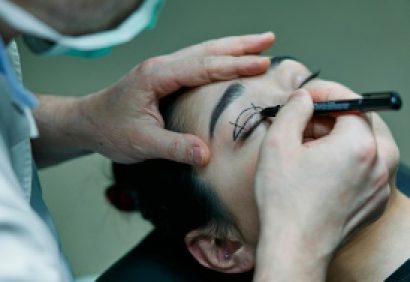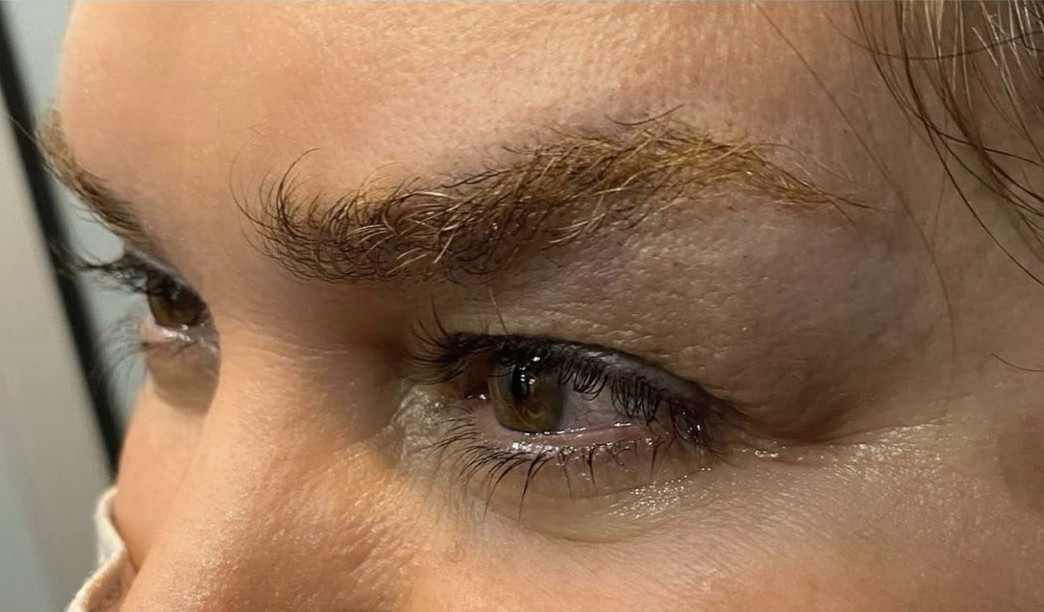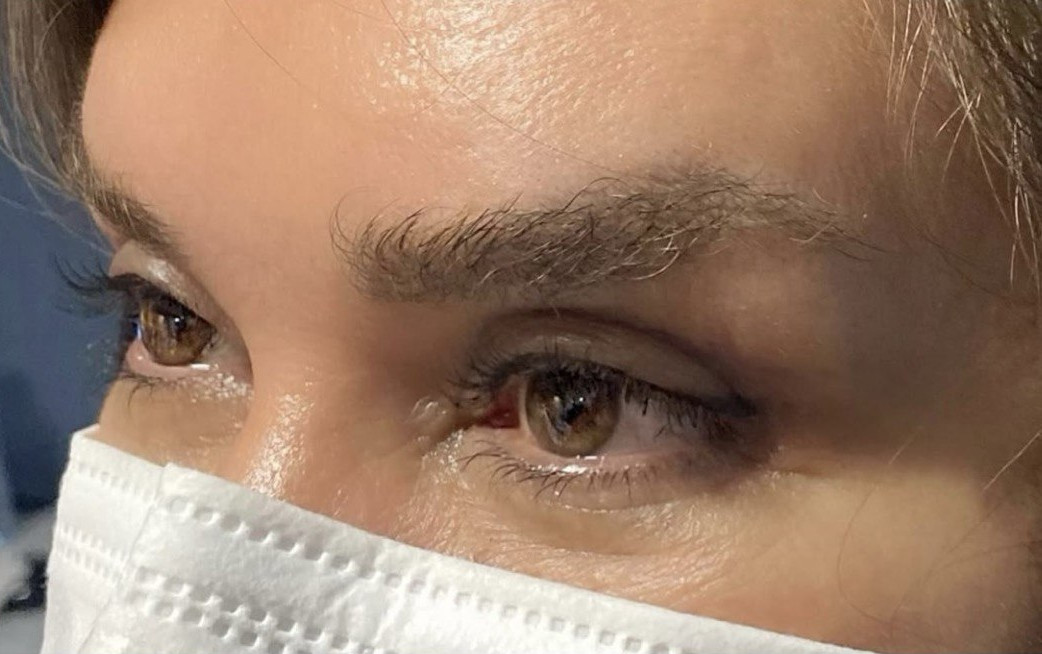Jump To:
Fast Facts
- Approximate Length Of Stay: 7-10 Days
- Operation Duration: 1-3 Hours
- Approximate Recovery: 1-2 Week

Blepharoplasty
“Blepharoplasty”, commonly known as “Eyelid Surgery”, is a procedure that aims to improve the appearance and function of the eyelids.
This surgery can be performed on the upper eyelids, lower eyelids, or both, and can address issues such as drooping eyelids, puffiness, and bags under the eyes.
Here’s a detailed overview of blepharoplasty:
Types of Blepharoplasty
1. Upper Blepharoplasty
- Description: This procedure involves removing excess skin, muscle, and sometimes fat from the upper eyelids.
- Indications: It is commonly performed to correct drooping upper eyelids that can impair vision or create a tired appearance.
- Benefits: Improved vision field, more youthful and alert appearance.
2. Lower Blepharoplasty
- Description: This surgery targets the lower eyelids to remove or reposition fat deposits, tighten muscles, and remove excess skin.
- Indications: It is often done to reduce puffiness, bags, and wrinkles under the eyes.
- Benefits: Smoother, firmer skin under the eyes, reduction in dark circles and puffiness.
3. Blepharoptosis
Commonly referred to as “Ptosis”, is the medical term for drooping of the upper eyelid. This condition can affect one or both eyes and may be present at birth (congenital ptosis) or develop later in life (acquired ptosis). The severity of ptosis can vary, from a slight droop to complete coverage of the pupil, which can obstruct vision.
4. Epicanthoplasty
Also known as “Medial Epicanthoplasty”, is a surgical procedure designed to reduce or eliminate the epicanthal fold—a skin fold of the upper eyelid that covers the inner corner (medial canthus) of the eye. This fold is more prevalent among East Asian populations and can make the eyes appear smaller and closer together. The procedure is often performed for cosmetic reasons, to create a more open and aesthetically pleasing eye appearance, and it can also be combined with double eyelid surgery (blepharoplasty) for more dramatic results.
Procedure Steps
Pre-Surgery Preparation
- Consultation:
- A thorough examination by a qualified plastic surgeon or ophthalmologist to assess the patient’s needs and expectations.
- Discussion of medical history, including any conditions that might affect the surgery, such as dry eyes, glaucoma, or thyroid disorders.
- Pre-Operative Instructions:
- Instructions on medications to avoid before surgery (e.g., blood thinners).
- Guidelines for fasting if general anesthesia is to be used.
Surgery
- Anesthesia
- Local anesthesia with sedation or general anesthesia can be used depending on the extent of the surgery and patient preference.
- Incision
- For upper blepharoplasty, the incision is made along the natural crease of the upper eyelid.
- For lower blepharoplasty, the incision can be made just below the lower lash line or inside the lower eyelid (transconjunctival approach).
- Correction
- Excess skin, fat, and sometimes muscle are removed or repositioned.
- The underlying muscles may be tightened.
- Closure
- Incisions are closed with sutures or surgical glue, and small bandages may be applied.
Post-Surgery Care
- Immediate Recovery
- The patient may experience swelling, bruising, and mild discomfort.
- Cold compresses and prescribed medications can help manage these symptoms.
- Post-Operative Instructions
- Keeping the head elevated, avoiding strenuous activities, and following specific instructions for eye care.
- Using prescribed eye drops or ointments to prevent infection and keep the eyes lubricated.
- Follow-Up
- Regular follow-up appointments to monitor healing and remove stitches (if non-absorbable sutures were used).
- Most patients can return to normal activities within 1-2 weeks, with full healing taking a few months.
Potential Risks and Complications
- Infection and bleeding
- Dry eyes or difficulty closing the eyes completely
- Scarring
- Temporary blurred vision or double vision
- Changes in skin sensation
- Anesthesia risks
Benefits of Blepharoplasty
- Enhanced Appearance: A more youthful and rested look.
- Improved Vision: Better peripheral vision if droopy eyelids were impairing sight.
- Increased Confidence: Improved self-esteem and confidence due to a refreshed appearance.
Conclusion
Blepharoplasty is a highly effective procedure for improving the appearance and function of the eyelids. It requires careful consideration and consultation with a skilled surgeon that we work with in SHIFA to ensure the best results. Adherence to pre- and post-operative instructions is crucial for a smooth recovery and optimal outcomes.
Compare Before and After Images


Blepharoplasty
Frequently Asked
Questions
Is Blepharoplasty painful?
“Blepharoplasty” is one of the least painful cosmetic procedures. You may have some slight discomfort on the day of surgery, but you should feel better quickly.
Does Blepharoplasty last forever?
If you opt for upper eyelid correction, you can expect your results to last for roughly five to seven years. The results of lower blepharoplasty last a lifetime because they are mostly derived from the removal of excess subcutaneous fat.
Does Blepharoplasty leave scars?
Every surgery carries a risk of scarring, but blepharoplasty surgery is associated with some of the most minimal scarring of any cosmetic procedure. During upper eyelid surgery, Dr. Amato is careful to make her incisions along the eyelid’s natural crease.
Why choose SHIFA for Eye Surgery?
Shifa clinic has some of the finest ophthalmologists and plastic surgeons in Iran. Iranian surgeons are all board-certified. They have received training and fellowships from top medical universities and hospital colleges in the US and EU.
SHIFA's Departments
Related Services
Featured Services

Cataract Surgery
“Cataract Surgery” is a common and generally safe procedure to remove a cloudy lens (cataract) from the eye and replace

Facial Botox Injections
“Facial Botox injections” are a popular non-surgical cosmetic procedure used to reduce the appearance of facial wrinkles and fine lines.
Glaucoma Surgery
“Glaucoma Surgery” is performed to reduce intraocular pressure (IOP) and prevent further damage to the optic nerve, which can help

Gastric Balloon
The “Gastric Balloon”, or “Intragastric Balloon”, is a non-surgical, temporary weight-loss procedure that involves placing a balloon in the stomach
Our Blog Articles
- mehdi.mhj@gmail.com
5 Great reasons to use an online doctor to choose
Delve into the impact of digital life on mental health & discover practical strategies to...
Read More- mehdi.mhj@gmail.com
Doccure – Making your clinic painless visit?
Explore the benefits & challenges of virtual healthcare appointments, along with tips for making good...
Read More- mehdi.mhj@gmail.com
What are the benefits of online doctor booking
Explore importance of quality sleep & learn tips to improve your sleep, ensuring raise-up refreshed...
Read More- mehdi.mhj@gmail.com
Benefits of Consulting With an Online Doctor
Uncover strategies to achieve a harmonious balance between professional and personal well-being....
Read More





Comments are closed.